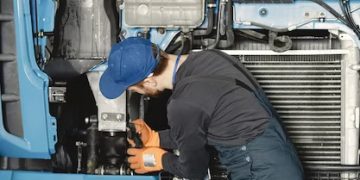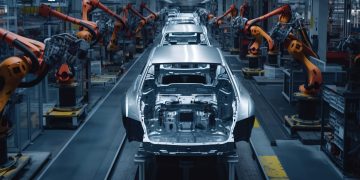The Indian auto repair industry faces several challenges when it comes to workplace safety. Upskilling workers in health, safety, and wellbeing can significantly help mitigate risks associated with these challenges. In this article, Arindam Lahiri, CEO, Automotive Skills Development Council, (ASDC) takes a look at some of the challenges affecting the Indian automotive service sector on its journey to achieving best practice health, safety, and wellbeing in the workplace and the ways to mitigate them.
The automobile industry is contributing around 7.1% to the GDP of India, making it one of the major supporters of the country’s economic growth. As of 2021, around 3.2 Cr people are directly or indirectly employed in the industry.

While India aims to expand its horizons in auto manufacturing capabilities, there is a grim reality at the bottom of it that can’t be ignored—the dilapidated condition of auto workers and rising concerns about their overall safety.
The workforce in India’s automotive industry is largely composed of migrant workers – 92%, out of which around 81% of them are educated only up to grade 10. This community of workers is also underpaid with 71% of them earning less than Rs 10, 000 a month despite working under strenuous conditions for approximately 12 hours every day.
Many of these low-paid workers and helpers are involved in operating power press and other heavy machinery without adequate training, or an increase in their compensation when met with an accident. Amid all this, most of the accidents leave behind a sad trail of unforgettable events with most of the affected workers. With a finger or a hand lost, most of them are forced into a perplexing state of unemployment struggling to support their families as sole breadwinners.
Safety gaps causing a ripple effect
Much of the problem within the manufacturing sector has to do with growing safety gaps and the lack of a trained workforce that knows to operate heavy machinery. Most companies bank on only cheap labour and hire a workforce that is incompetent to work in a manufacturing unit.
The lack of alacrity among the policymakers to ensure a healthy working environment in the auto sector and a marginalized untalented workforce is leading to immense human misery thereby adding to unproductivity within the auto industry.
Given the present scenario of rising unemployment, cheap labor is easily available in India which automatically translates to easily replacing injured workers at a negligible cost to owners and factories’ management. Due to discrepancies within the policy framework, the indirect or hidden costs of the medical expenses, investigation costs, and material damages, any disruption in the production process poses not only a negative impact on the quality of the product but also discourages workers.
Solutions and Measures: Avoiding the slip to the bottom
Due to its growing financial strength and growth, the auto sector is amongst the only few sectors that have the capability to address the issues within its larger supply chain. There is no doubt in the fact that the corporates hold a larger influence in ensuring the well-being of their workers but the government too has a larger role to play by introducing favorable policies especially dedicated to the well-being of the workers in the auto manufacturing segment.
Some of the measures that can avoid the auto industry to slip to the bottom of the problem are:
- An industry-level task force can be created that will play a potent role in closely monitoring the situation in the manufacturing units and initiate actions that will prevent untoward accidents in the deeper supply chain. This will also help in establishing a level playing field between the corporates and the workers.
- Much more transparency and accountability for the safety of the workers in the extended supply chain will not only instill motivation among the workers but will also stabilize the otherwise unstable workforce at the manufacturing units.
- Training is the need of the hour. As most of the workers are highly unqualified for operating heavy machinery, an industry-level training for all workers (especially the migrant and contractual) should be introduced soon.
- Since most of the information on incidents especially in small manufacturing units is never open to the public, an online system to record each and every data should come in place. A dedicated helpline can also prove to be stable support for the workers in case of emergencies.
- An affective grievance redressal mechanism should be introduced to entertain workers at all times. Additionally, a Q/A call service can be organized with skilled engineers to address workers’ queries on a real-time basis.
- Active support to plans like launching a national programme for recognizing workers’ prior learning and certification programmes by organizations like ASDC will help in establishing a workforce that is well-trained with the needed skills.
Source
https://www.safeinindia.org/_files/ugd/5d022b_d29a9e851218435bb83687175c30193b.pdf
https://auto.economictimes.indiatimes.com/news/industry/indian-auto-industrys-dirty-little-secret-it-doesnt-care-for its-supply-chain workers/89134282
https://economictimes.indiatimes.com/industry/auto/auto news/auto-industry-lacks-policies-to-ensure-worker-safety throughout-the-supply-chain-report/articleshow/84266846.cms?from=mdr

























































